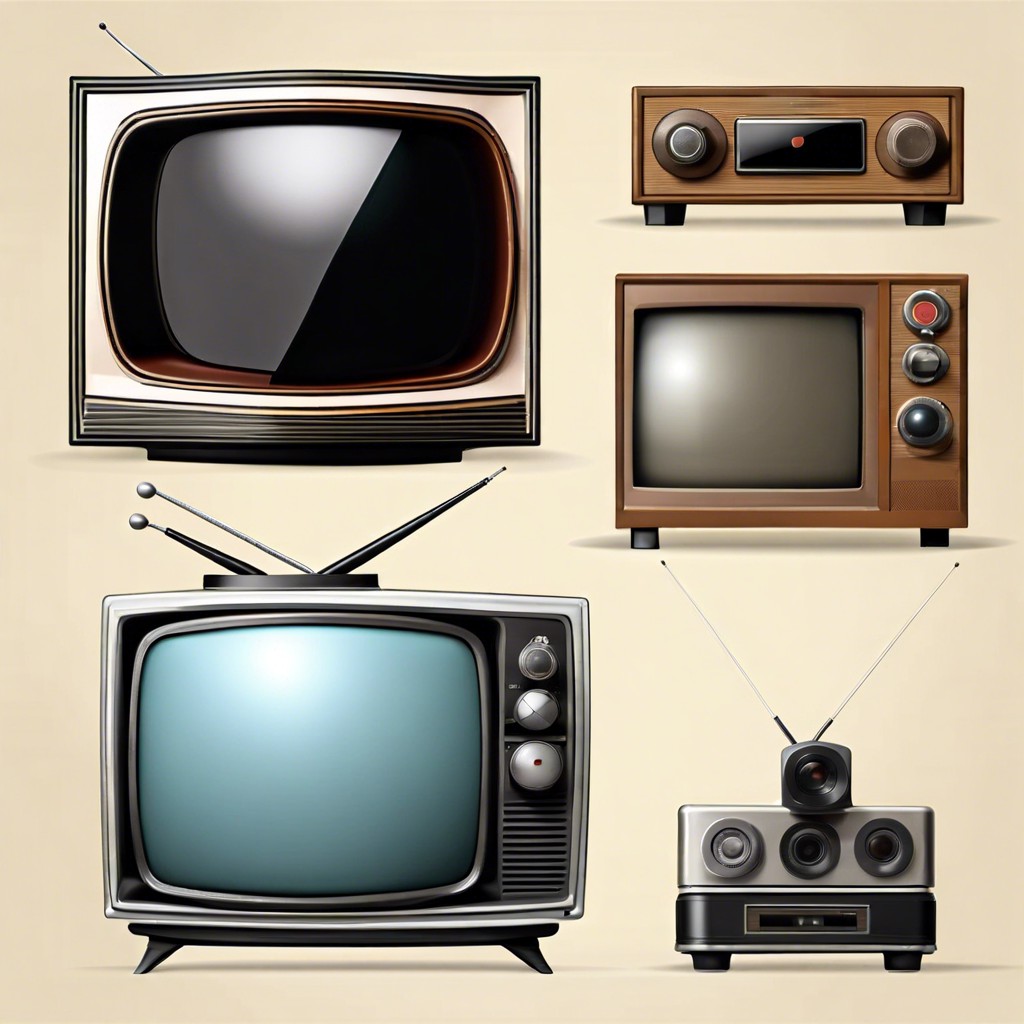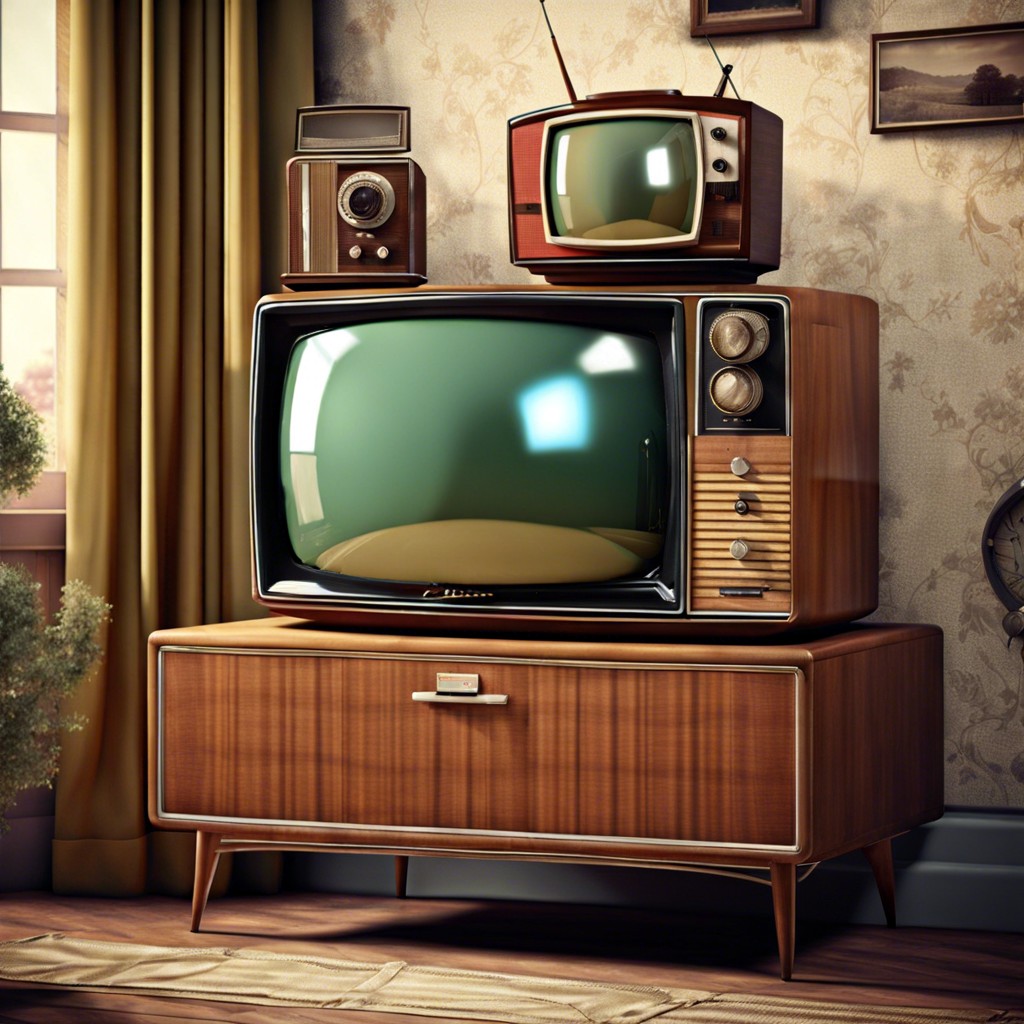Last updated on
Discover the key considerations for purchasing a vintage television set to add a touch of nostalgia to your living space.
Key takeaways:
- Vintage televisions reflect the evolution of technology and design.
- Vintage televisions have cultural and historical significance.
- Consider rarity, condition, and authenticity when collecting vintage televisions.
- The transition from black and white to color broadcasting changed television history.
- Proper disposal and recycling of old TVs is important for the environment.
Evolution of Television Technology

Television technology has witnessed significant advancements since its inception. The initial mechanical models of the 1920s, which relied on rotating disks, gave way to the electronic televisions of the 1930s, employing the cathode-ray tube (CRT) for image transmission. This CRT technology remained dominant for much of the TV era, thanks to its ability to produce clear images at a reasonable cost.
With the 1970s came the introduction of solid-state electronics, replacing older vacuum tube components and significantly reducing the size and power consumption of television sets. This progress laid the groundwork for the digital revolution.
The late 1990s and early 2000s marked the transition to flat-screen displays, such as liquid crystal displays (LCDs) and light-emitting diodes (LEDs), offering slimmer profiles, improved picture quality, and lower energy usage. The push for higher resolution led to the development of High Definition (HD) and later 4K ultra-high-definition (UHD) technologies.
Concurrent with improvements in picture quality, TV functionality expanded. Smart TVs integrated internet connectivity, allowing streaming and on-demand services. This evolution reflects changing consumption patterns, moving from scheduled programs to personalized viewing experiences.
The Cultural Impact of Vintage Televisions

Vintage televisions serve as historical markers, delineating the social and economic climates of their eras. The programs broadcast during the heyday of these sets not only entertained but also influenced public opinion and fostered a shared cultural experience. Families gathered around their television sets, a ritual that united them and created a common ground for discussion and bonding.
These older models are a testament to the evolution of visual storytelling. Shows from the past provided a platform for societal discourse, subtly addressing contemporary issues under the veil of fiction or variety formats. As society progressed, so did the themes on screen, reflecting changing attitudes towards gender roles, race, and morality.
Collectors and enthusiasts often cite the design and craftsmanship of vintage televisions as a form of art. The aesthetic of the television sets themselves, with their wood veneers, retro lines, and dials, evoke nostalgia and an appreciation for design trends of the mid-20th century.
Lastly, vintage televisions underscore the technological leaps that have occurred since. From the bulky, rounded screens and limited channel selection to the slim, high-definition displays of today, these antiques remind us of the relentless march of innovation.
Collecting Vintage Televisions

Collectors of vintage televisions often focus on rarities such as mechanical TVs, which predate the electronic sets common post-World War II. Enthusiasts also hunt for iconic models like the Philco Predicta or the RCA TRK-12, which stand out for their design.
When assessing a vintage television’s value, consider factors such as rarity, condition, brand, and the presence of original components. Working condition is a bonus but not mandatory; some collectors appreciate non-functional models for their aesthetic value.
Restoration presents a particular challenge due to the scarcity of parts and the expertise required. It’s crucial to connect with knowledgeable restorers who ensure that any refurbishment maintains the TV’s authenticity.
The community aspect plays a significant role, with clubs and online forums offering resources and connections. These gatherings are essential for sharing information, trading parts, and fostering a collective appreciation for these historic pieces.
Finally, display considerations should not be underestimated. A vintage television can be a centerpiece in a room, and should be placed considering its period-appropriate setting to enhance aesthetic appeal.
The Transition From Black and White to Color Broadcasting

The shift to color broadcasting marks a pivotal moment in television history, beginning in the early 1950s. This transition did not occur overnight; it was a gradual process that unfolded over several years.
Initially, color broadcasts were a luxury, with the first commercially licensed color broadcast occurring on January 1, 1954, with NBC’s telecast of the Tournament of Roses Parade. The technology, championed by major networks, was costly and required significant investment in new equipment both by broadcasters and consumers.
With broadcasters producing more color programs, the demand for color televisions increased. By the mid-1960s, the sale of color television sets surpassed that of black and white, and by the end of the 1970s, color television was the definitive standard.
The transition also spurred technical advancements. The development of the National Television System Committee (NTSC) color system was crucial, allowing color broadcasts to be viewed on existing black and white sets without modification, ensuring a smoother consumer transition.
This era also saw the standardization of the 525-line color system, which defined the look of television until the digital age. Critics note the enhancement in storytelling possibilities with color, enabling shows to utilize visual cues and styles previously impossible, thereby reshaping the viewer’s experience.
Eco-friendly Disposal and Recycling Options for Old TVs

Proper disposal of old televisions is crucial to prevent environmental harm. Hazardous substances such as lead, mercury, and cadmium must not enter landfills. Many municipalities offer e-waste collection programs to safely handle these items.
Recycling programs often disassemble the units to salvage glass, plastics, and circuitry. This process reduces the need for new raw materials, conserving energy and natural resources.
Consumers can also consider donation. Organizations accept functional older models to be used for educational purposes or for those in need. It extends the life of the product and avoids unnecessary waste.
Electronic retailers sometimes offer take-back services. When purchasing a new device, they may dispose of your old one responsibly, sometimes offering incentives for this eco-conscious choice.
The growth of specialized e-waste recycling companies provides another option. They ensure that old electronics are dealt with appropriately, often using state-of-the-art processes to recover precious metals and prevent toxic spillage into the environment.
Before pursuing any disposal method, remove all personal data from smart TVs to safeguard privacy.
In sum, proper disposal means considering the environmental footprint and choosing the most responsible option available.
Related:



